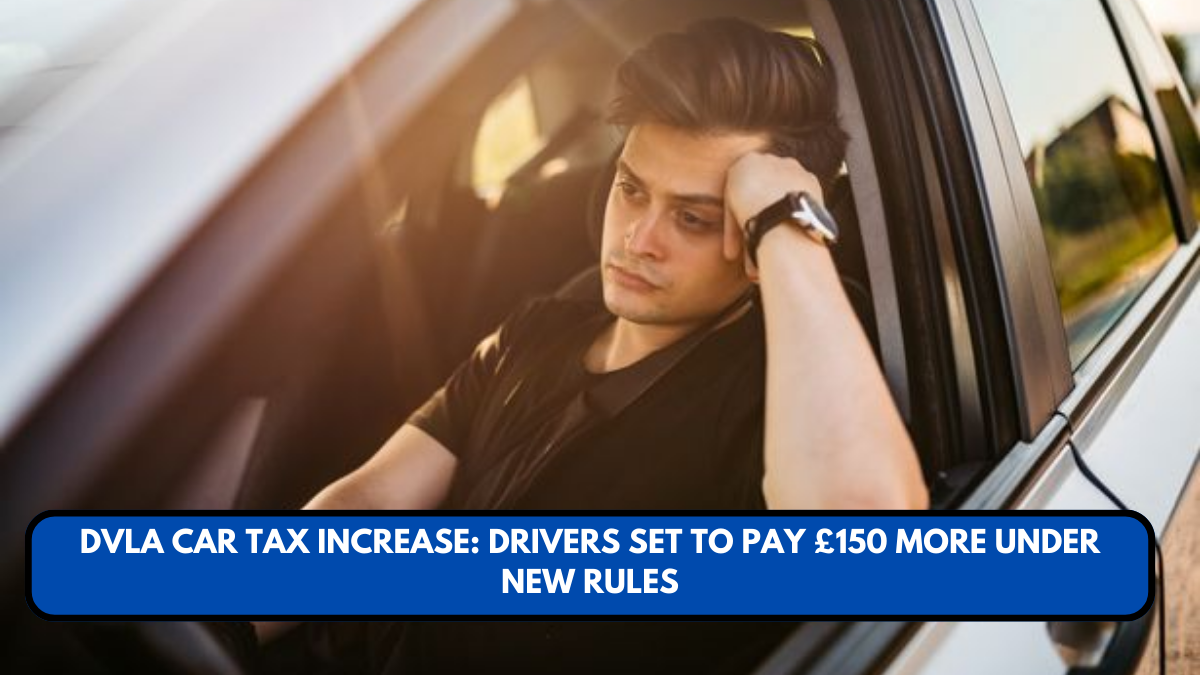From April 1, 2025, millions of UK drivers will face higher annual vehicle tax bills as the Driver and Vehicle Licensing Agency (DVLA) introduces sweeping changes to the Vehicle Excise Duty (VED) system. These changes are aimed at increasing government revenue, promoting greener transport, and adjusting tax bands in line with inflation.
For some motorists, particularly those driving petrol and diesel cars or purchasing new vehicles, the changes could result in an annual increase of up to £150 — or even more in the case of high-emission cars.
What’s Changing?
1. Electric Vehicles No Longer Exempt
For the first time, electric vehicles (EVs) will no longer be exempt from paying VED. Until now, EVs enjoyed zero tax liability as an incentive to boost low-emission vehicle adoption. But that’s changing:
- New EVs registered on or after April 1, 2025 will pay:
- £10 in the first year,
- £195 annually thereafter,
- And an additional £425 “Expensive Car Supplement” if the car is priced above £40,000, applicable for five years.
- Existing EVs registered between April 1, 2017, and March 31, 2025, must now pay the standard rate of £195 per year.
- Older EVs (registered between March 1, 2001, and March 31, 2017) are now subject to a £20 annual charge.
You can check your vehicle’s tax status on the official GOV.UK vehicle tax checker.
2. Steep Increases for Petrol and Diesel Vehicles

The most noticeable changes affect petrol, diesel, and hybrid cars, especially those with higher CO₂ emissions. First-year VED rates have increased significantly.
Here’s a look at how some bands have changed:
| CO₂ Emissions | Old First-Year Rate | New Rate (2025) |
|---|---|---|
| 131–150 g/km | £270 | £540 |
| 151–170 g/km | £680 | £1,360 |
| 191–225 g/km | £1,650 | £3,300 |
| Over 255 g/km | £2,475 | £5,490 |
These increases can more than double the initial registration cost for new cars in some cases.
3. Standard VED Rate Now £195
For all cars registered on or after April 1, 2017, the flat annual VED rate has now risen to £195. This applies across all fuel types — including petrol, diesel, hybrid, and electric vehicles — except those that fall under the “expensive car” surcharge.
Previously, this flat rate was £180, meaning drivers will see a £15 to £150 increase, depending on their vehicle type and emissions.
Why the Changes?
According to the UK government, the tax changes serve three key purposes:
- Encourage Low-Emission Choices: By taxing high-polluting cars more, the system promotes environmentally friendly options.
- Address Falling Revenues: With the rise in EV adoption and reduced fossil fuel consumption, traditional VED revenue streams are dwindling.
- Inflation Alignment: Adjusting tax thresholds ensures rates keep pace with the Retail Price Index (RPI).
These new policies were originally outlined in the Autumn Statement 2022 and have now been implemented across the country.
How Will Drivers Be Affected?
The changes mean that owning a car in the UK just became more expensive for many households:
- New car buyers will pay significantly more upfront — especially for cars emitting over 150g/km CO₂.
- Existing petrol and diesel drivers face a modest increase of £15–£20 in standard VED.
- EV owners, previously exempt, must now budget for annual tax costs of up to £620 depending on vehicle price.
Those planning to buy an EV may want to consider used models registered before April 1, 2025, as they may avoid the higher supplements, at least for now.
What Can Drivers Do?

Check Your Vehicle’s CO₂ Emissions
Visit the GOV.UK CO₂ emissions checker to understand your vehicle’s emissions and applicable VED band.
Consider Lower-Emission or Used Vehicles
Choosing a lower-emission car — or purchasing a used EV registered before April 2025 — can lead to significant long-term tax savings.
Budget Accordingly
While the increases may seem small for standard vehicles, those planning to purchase a new car — especially in the SUV or luxury segment — should factor in thousands of pounds in added tax.
Conclusion
The new DVLA rules mark a pivotal shift in how vehicle taxes are levied in the UK. While aimed at encouraging eco-friendly motoring and stabilising public revenue, they also present new financial challenges for drivers across the board. Whether you’re behind the wheel of an electric car or a traditional petrol hatchback, it’s important to stay informed and plan ahead.
For more detailed information on current VED rates, visit the official Vehicle Tax Rates page on GOV.UK.

Outside of work, he enjoys playing chess, following cricket, and writing short stories. His commitment to integrity and in-depth analysis strengthens OTE News’ mission of providing trustworthy journalism.




